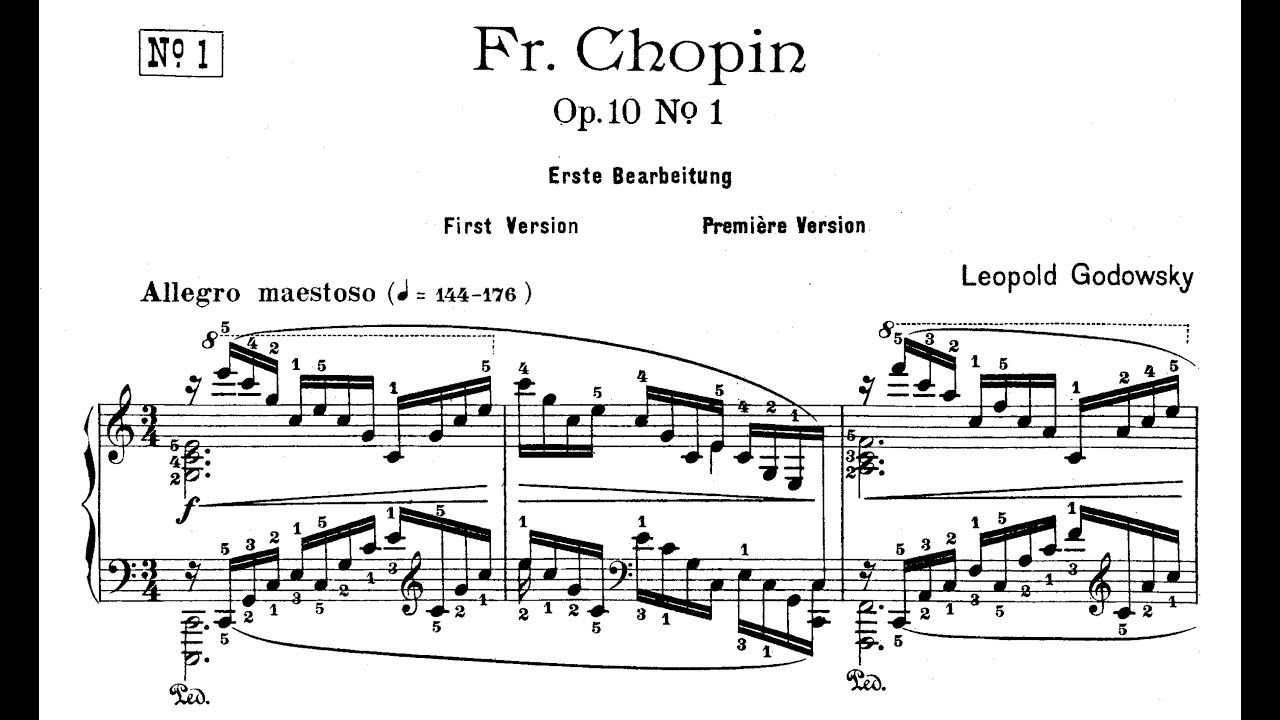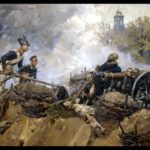[The complete opus 10 studies of Chopin and Studies on the Op.10 Chopin Studies by Godowsky, played by David Stanhope, are available on CD (TP230) and DVD (with commentaries) from Tall Poppies Records (www.tallpoppies.net). Go buy! There are loads of less-well known pianists out there who could use your support.]
Godowsky’s studies on Chopin’s etudes are marvellous masterpieces. They’re not just wonderful tributes to Chopin’s etudes: they also significantly extend them in terms of harmony, colour, and, most importantly, counterpoint. They’re essentially a set of highly evocative character pieces, covering a huge range of expressive styles and moods, and it’s very hard not to be awestruck by the craft and keyboard mastery that must have been put into writing them. Every note and articulation (those swarms of pedal markings and fingerings) is perfectly judged, and Godowsky’s skill with counterpoint sometimes reaches levels you only otherwise find in Bach: see the way he conjures multiple voices from a single line in No.2, adds inner chromatic lines in No.8, 15a, and 20, spins a beautiful melody from accompaniment in No.15, drives the polyphony so intensely it generates bewildering harmonies in No.17, combines etudes in No.18, gives each voice its own rhythmic pulse in No.19, or puts a canon in Nos. 18a and 21. Apart from this contrapuntal invention you also have a lot of textural variety: in this set you’ll find nocturnes (Nos.13 and 15), a tarantella (No.9), a capriccio (No.10), toccata (No.14), chorale (No.1), dances (No.17 and 18a), and an exuberant fantasy (No.16).
The way Godowsky manipulates Chopin’s material is consistently ingenious: some of the left-hand etudes are close to being transcriptions, but more often than not often harmonies are radically altered, a tiny figuration gives rise (in Diabelli-esque fashion) to an extended sequence, whole sections are shifted around in time or transferred between hands, rhythms are transformed and piled up against each other, and melodies are introduced to countermelodies. It’s also worth mentioning that these studies go much further than Chopin’s in developing technique for the left hand – even in the two-handed etudes, the left hand often has the lion’s share of the hard work, and in the left-hand etudes it’s surprising how many contrapuntal lines Godowsky manages to under one hand. (It should also be said that while the difficulty of some of these etudes is truly extreme, the technical challenges of the set as a whole have been pretty exaggerated: some of the left-hand etudes, for example, are basically sight-readable.)
Stanhope and Hamelin are responsible for my two favourite renditions of the Godowsky studies, though Stanhope has only recorded the Op.10. His playing is not as technically effortless as Hamelin’s (though tempi are just as uncompromising), but it is more richly textured. Every contrapuntal nook is explored (where Hamelin, for a more luscious sound, sometimes hides dissonances or inner voices), and the hypermeter of each piece is never disturbed by unnecessary rubato. Some of the interpretive decisions he makes are also pretty interesting: in No.1, for instance, the decision to blur the semiquavers to let the chorale tower over the texture, or decision to keep tempo relatively constant in No.5, or the choice of the frenzied, biting ossia in No.19 at 48:25.




